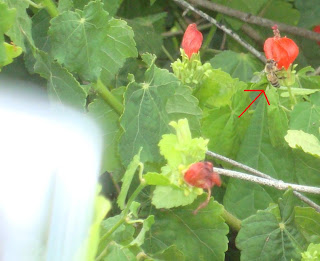
Radial Symmetry
When the petals are of the same size, shape, and are equidistant from each other, the flower has radial symmetry. As you can see, the white flower pictured has radial symmetry.
Basidiomycete
The phylum basidiomycota consists of fungi that produce spores that are formed outside a pedestal-like structure. The members of this phylum, known as basidiomycetes, include all the fungi with gills or pores, which the mushroom I have pictured is a perfect example of.
Homeostasis
When an organism is in a state of homeostasis it is able to maintain a stable, constant condition. In order to maintain her state of homeostasis, my sister takes a midday nap to rejuvenate her body. Another way to maintain our human homeostasis is consuming the right nutrients to help keep our internal structures functioning properly.
Exoskeleton
Shells are hard, largely calcareous exoskeletons of marine animals, especially mollusks. I have this shell from a Galveston beach because it fascinates me that it was once a home to a small creature.
Ethylene, H2C=CH2, is a plant hormone compound that has the simplest structure in its class. One practical use of ethylene is to make polyethylene, which is used to make the ever-popular shopping bag (like pictured).
The skin on my body (including my beautiful arm pictured) is made up of epithelial tissue. This tissue acts as an interface between my body and the rest of the world. It is made up of cells that are tightly packed together, and it helps protect me from microorganisms and injury
Endosperm
Endosperm is the tissue produced in seeds of most flowering plants around the time of fertilization. It can be a source of nutrition for humans. Wheat endosperm is ground into flour to make bread, like the bread pictured. Once cheese and ham are placed on this slide, it becomes a perfect snack, and the human can benefit from the starch, oils, and proteins from the endosperm.
An ectotherm is an animal that must use external sources of heat to maintain its regular body temperature. I often find lizards crawling around the outside lights around my house and thought they would be perfect models. They crawl around to soak in the heat from the lights, for they are cold-blooded creatures.
Parasitism
A mosquito sucked blood from my foot, and I was harmed while the insect now has a full stomach. Somewhat similar to commensalism, the mosquito practiced parasitism when it sucked my blood. But not only did I not benefit from its actions, I was harmed as well.
This green moss has a commensal relationship with the tree because it benefits from some of the nutrients that may fall down the bark, making it ahead of the game when competing with mosses on the forest floor. The moss also has access to more sunlight that it needs, while the tree neither gains nor loses from having its new green furry friend.
A frond is a type of leaf that has many divisions in it. The palm pictured is an example of a frond leaf. Ferns and cycads also have fronds.
Bilateral Symmetry
The little butterfly I found on a decorative rock in my front yard has perfect bilateral symmetry. If one were to draw a line (like the one shown) from the tip of its antennae down through its abdomen, either side of the butterfly would be perfectly identical.
The bee on the right-hand side of the picture is a pollinator, because it has the ability to be a vector of pollen to another plant. Once the pollen sacs have been dropped onto another flower, the pollination begins!
 Anther and Filament of a Stamen
Anther and Filament of a StamenThe yellow stamens can be seen at the middle of this pretty pink flower. The anther is the yellow tip, and the filament is the long stem sort of thing that makes up most of the stamen. They surround the pistol, which is the female ovary of the flower.














No comments:
Post a Comment
Note: Only a member of this blog may post a comment.